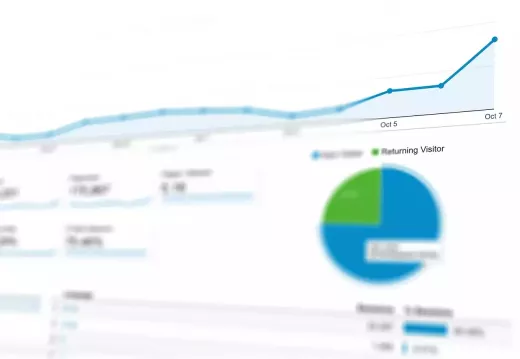What are email templates?
Email templates are pre-designed email layouts that you can customize with your own content and branding. These templates are usually created by email service providers or third-party providers and offer a range of designs for different types of email campaigns, such as newsletters, promotional emails, and event invitations. Email templates are designed to save time and effort, allowing you to create professional-looking emails quickly and easily. They come with pre-built sections for headers, footers, and content blocks, and you can add your own images, text, and links to customize the layout.
One of the biggest advantages of email templates is that they are easy to use, even if you have no design experience. They are also compatible with various email clients and devices, ensuring that your emails look good no matter where they are viewed. Another advantage of email templates is that they can be cost-effective, as many email service providers offer a wide range of templates for free or at a low cost.
What is custom email design?
Custom email design involves creating unique email layouts from scratch, tailored to your brand's specific needs and goals. This approach requires more time, resources, and design expertise than using email templates, as you are starting with a blank canvas and need to create every element of the email design from scratch. Custom email design allows you to create emails that are completely unique and tailored to your brand's personality, which can help your emails stand out in the inbox and create a stronger connection with your subscribers.
Custom email designs can also be fully optimized for your specific goals, whether that be increasing click-through rates, driving more sales, or promoting a specific product or service. By using custom designs, you have complete control over the layout, typography, colors, and other design elements, allowing you to create an email that perfectly matches your brand's style and tone.
Pros of using email templates
Email templates have a number of advantages that make them a popular choice for many businesses. One of the biggest benefits of using email templates is that they save time and effort. With pre-designed templates, you don't have to spend hours creating a layout from scratch or worrying about the technical details of email design. Most email templates come with pre-built sections for headers, footers, and content blocks, making it easy to add your own content and branding.
Another advantage of using email templates is that they are cost-effective. Many email service providers offer a wide range of templates for free or at a low cost, which can be a great option for businesses with limited budgets. Using email templates can also help ensure that your emails are optimized for various email clients and devices, as they are designed to be compatible with different platforms.
Cons of using email templates
While email templates offer many benefits, they also have some limitations that may not be suitable for all businesses. One of the biggest drawbacks of using email templates is that they may not be as unique or eye-catching as custom designs. Because they are pre-designed layouts, they may not perfectly align with your brand's personality or style, and they may not stand out in a crowded inbox.
Another disadvantage of using email templates is that they can limit your creativity and branding. With pre-designed templates, there may be certain design elements or features that you cannot change or customize, which can make it difficult to create an email that perfectly matches your brand's vision. Additionally, using the same templates as other businesses can make your emails look generic or unoriginal.
Pros of using custom email design
Custom email designs offer several benefits that can help your emails stand out and create a stronger connection with your subscribers. One of the biggest advantages of custom email design is that it allows you to create unique and eye-catching designs that perfectly match your brand's personality and style. With custom designs, you have complete control over every aspect of the email, from colors and typography to images and layout.
Another advantage of custom email design is that it can be optimized for your specific goals and objectives. By tailoring your email design to your specific campaign, you can create a layout that is designed to drive conversions, promote a product or service, or engage your subscribers. Custom email designs can also help you build a stronger brand identity and stand out in a crowded inbox.
Cons of using custom email design
While custom email design offers many benefits, it also has some drawbacks that may not be suitable for all businesses. One of the biggest disadvantages of custom email design is that it requires more time, resources, and expertise to create. If you don't have experience in email design or access to a professional designer, creating custom designs from scratch can be a challenging and time-consuming process.
Another disadvantage of custom email design is that it can be more expensive than using pre-designed email templates. Because custom designs require more time and expertise, they may come with a higher price tag than using pre-designed templates. Additionally, custom designs may not be compatible with all email clients and devices, which can limit the reach of your emails.
Which is better for your business?
Deciding between email templates and custom designs ultimately depends on your business's specific needs, goals, and resources. If you are short on time and budget, email templates can be a great option for quickly creating professional-looking emails without the need for design expertise. They are also a good choice if you want to ensure that your emails are optimized for various email clients and devices.
On the other hand, if you have a strong brand identity and want to create unique and eye-catching designs that stand out in the inbox, custom email designs may be a better choice. Custom designs also allow you to tailor your email layouts to your specific goals and objectives, which can lead to higher conversions and engagement.
How to choose between email templates and custom design
When choosing between email templates and custom designs, there are several factors to consider. First, think about your budget and resources. If you have limited resources or a tight budget, email templates may be a better option. If you have more resources and a larger budget, custom designs may be worth the investment.
Next, consider your brand identity and goals. If you have a strong brand identity and want to create unique and eye-catching designs that perfectly align with your brand's personality and style, custom designs may be the way to go. If you are more focused on quick and easy email creation, email templates may be a better choice.
Finally, think about your audience and the type of content you want to share. If your subscribers are already familiar with your brand and you want to reinforce your brand identity, custom designs can be a great way to do so. If you are sending more informational or transactional emails, email templates may be a better fit.









